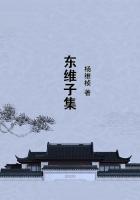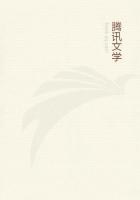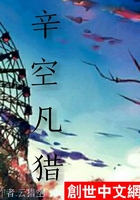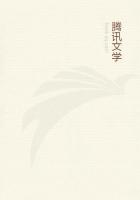The natural history of this animal will,probably,be written from observations made upon it in England,as several living ones of both ***es,have been brought home.Until such an account shall appear,probably the following desultory observation may prove acceptable.
The genus in which the kangaroo is to be classed I leave to better naturalists than myself to determine.How it copulates,those who pretend to have seen disagree in their accounts:nor do we know how long the period of gestation lasts.Prolific it cannot be termed,bringing forth only one at a birth,which the dam carries in her pouch wherever she goes until the young one be enabled to provide for itself;and even then,in the moment of alarm,she will stop to receive and protect it.
We have killed she-kangaroos whose pouches contained young ones completely covered with fur and of more than fifteen pounds weight,which had ceased to suck and afterwards were reared by us.In what space of time it reaches such a growth as to be abandoned entirely by the mother,we are ignorant.It is born blind,totally bald,the orifice of the ear closed and only just the centre of the mouth open,but a black score,denoting what is hereafter to form the dimension of the mouth,is marked very distinctly on each side of the opening.At its birth,the kangaroo (notwithstanding it weighs when full grown 200pounds) is not so large as a half-grown mouse.I brought some with me to England even less,which I took from the pouches of the old ones.
This phenomenon is so striking and so contrary to the general laws of nature,that an opinion has been started that the animal is brought forth not by the pudenda,but descends from the belly into the pouch by one of the teats,which are there deposited.On this difficulty as I can throw no light,I shall hazard no conjecture.It may,however,be necessary to observe that the teats are several inches long and capable of great dilatation.And here I beg leave to correct an error which crept into my former publication wherein I asserted that,"the teats of the kangaroo never exceed two in number."They sometimes,though rarely,amount to four.There is great reason to believe that they are slow of growth and live many years.This animal has a clavicle,or collar-bone,similar to that of the human body.The general colour of the kangaroo is very like that of the ass,but varieties exist.
Its shape and figure are well known by the plates which have been given of it.
The elegance of the ear is particularly deserving of admiration.
This far exceeds the ear of the hare in quickness of sense and is so flexible as to admit of being turned by the animal nearly quite round the head,doubtless for the purpose of informing the creature of the approach of its enemies,as it is of a timid nature,and poorly furnished with means of defence;though when compelled to resist,it tears furiously with its forepaws,and strikes forward very hard with its hind legs.
Notwithstanding its unfavourable conformation for such a purpose,its swims strongly;but never takes to the water unless so hard pressed by its pursuers as to be left without all other refuge.The noise they make is a faint bleat,querulous,but not easy to describe.
They are sociable animals and unite in droves,sometimes to the number of fifty or sixty together;when they are seen playful and feeding on grass,which alone forms their food.At such time they move gently about like all other quadrupeds,on all fours;but at the slightest noise they spring up on their hind legs and sit erect,listening to what it may proceed from,and if it increases they bound off on those legs only,the fore ones at the same time being carried close to the breast like the paws of a monkey;and the tail stretched out,acts as a rudder on a ship.In drinking,the kangaroo laps.It is remarkable that they are never found in a fat state,being invariably lean.
Of the flesh we always eat with avidity,but in Europe it would not be reckoned a delicacy.A rank flavour forms the principal objection to it.
The tail is accounted the most delicious part,when stewed.
Hitherto I have spoken only of the large,or grey kangaroo,to which the natives give the name of 'patagaran'.But there are (besides the kangaroo-rat)two other sorts.One of them we called the red kangaroo,from the colour of its fur,which is like that of a hare,and sometimes is mingled with a large portion of black:the natives call it 'bagaray'.It rarely attains to more than forty pounds weight.
The third sort is very rare,and in the formation of its head resembles the opossum.The kangaroo-rat is a small animal,never reaching,at its utmost growth,more than fourteen or fifteen pounds,and its usual size is not above seven or eight pounds.It joins to the head and bristles of a rat the leading distinctions of a kangaroo,by running when pursued on its hind legs only,and the female having a pouch.
Unlike the kangaroo,who appears to have no fixed place of residence,this little animal constructs for itself a nest of grass,on the ground,of a circular figure,about ten inches in diameter,with a hole on one side for the creature to enter at;the inside being lined with a finer sort of grass,very soft and downy.But its manner of carrying the materials with which it builds the nest is the greatest curiosity:by entwining its tail (which,like that of all the kangaroo tribe,is long,flexible and muscular)around whatever it wants to remove,and thus dragging along the load behind it.This animal is good to eat;but whether it be more prolific at a birth than the kangaroo,I know not.
[kangaroo was a name unknown to them for any animal,until we introduced it.
When I showed Colbee the cows brought out in the Gorgon,he asked me if they were kangaroos.]

